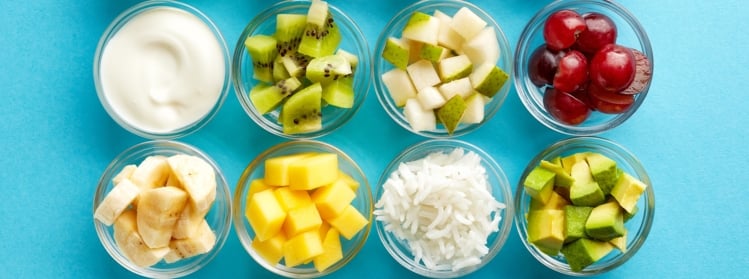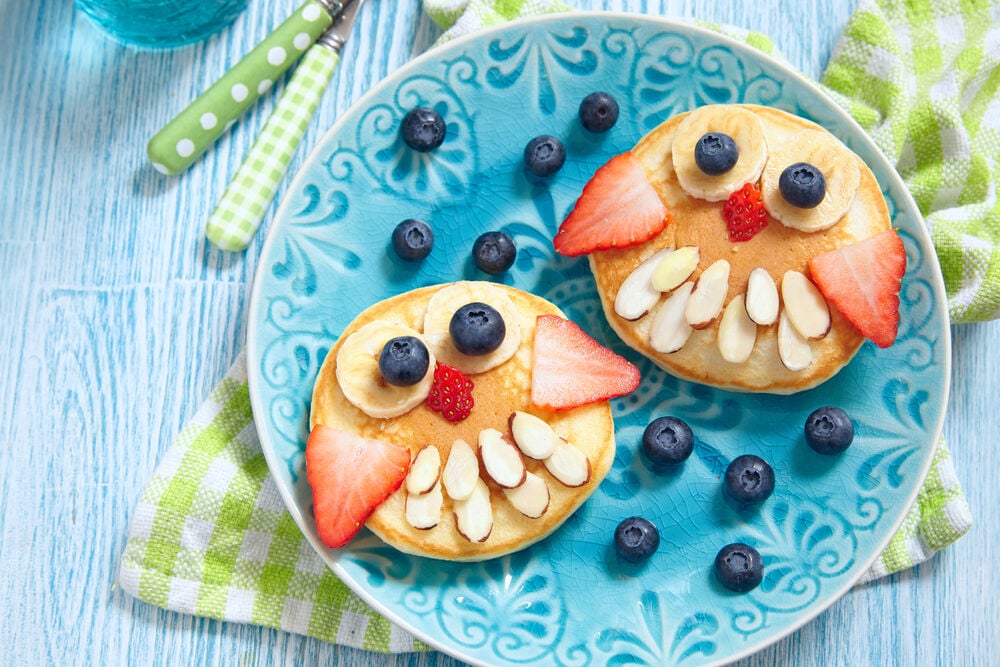Babies learning to chew have certain nutritional needs, so it's important to make sure that your baby's first finger foods are well-balanced with fruit, vegetables, protein, and healthy carbohydrates. Finger foods for 8- to 10-month-olds should also be soft enough to prevent choking and small enough for little gums to chew. Finger foods can also be included while still breastfeeding to fully round out a baby's nutritional needs.
-
Tracking cycle
-
Getting pregnant
-
Pregnancy
-
Help Center
-
Flo for Partners
-
Anonymous Mode
-
Flo app reviews
-
Flo Premium New
-
Secret Chats New
-
Symptom Checker New
-
Your cycle
-
Health 360°
-
Getting pregnant
-
Pregnancy
-
Being a mom
-
LGBTQ+
-
Quizzes
-
Ovulation calculator
-
hCG calculator
-
Pregnancy test calculator
-
Menstrual cycle calculator
-
Period calculator
-
Implantation calculator
-
Pregnancy weeks to months calculator
-
Pregnancy due date calculator
-
IVF and FET due date calculator
-
Due date calculator by ultrasound
-
Medical Affairs
-
Science & Research
-
Pass It On Project New
-
Privacy Portal
-
Press Center
-
Flo Accuracy
-
Careers
-
Contact Us
Easy Finger Food Ideas For Your Baby: a Comprehensive List


Every piece of content at Flo Health adheres to the highest editorial standards for language, style, and medical accuracy. To learn what we do to deliver the best health and lifestyle insights to you, check out our content review principles.
Adding solid foods may also help your baby sleep longer through the night, allowing you some much-needed rest, too. Many finger foods can also help your baby develop fine motor skills such as pinching an item to pick it up. Introduce finger foods one at a time to determine potential allergens and allow your baby to develop a taste for each new food. Using these creative, easy finger food ideas, you can help your baby develop a taste for many different nutritious foods.
When can your baby eat finger foods?
Babies can eat finger foods when they're able to sit up unassisted. For example, if you have to prop your infant up in a baby seat or with pillows, then their neck and throat aren't developed enough for the complex mechanisms of chewing. Your baby can eat finger foods once they have developed the ability to manipulate their fingers to take the food from the plate to their mouth and the dexterity of the tongue to process the food to swallow.
Remember that babies, whether breastfed or bottle-fed, have to gradually transition from drinking only liquids to very smooth pureed solids, then thicker solids and eventually very soft finger foods. The general rule of thumb from most pediatricians is to introduce one new food at a time, and that includes finger foods. Babies naturally explore, and one of the most common ways that they discover the world around them is by putting things in their mouth. Finger foods are a natural menu item at this stage of a baby's development.
Different ages can handle different types of finger foods. As always, fully supervise your baby when introducing new foods, both to avoid choking and to see if there are any allergic reactions. Always consult with your pediatrician about which foods your baby can safely eat and which to avoid.
Finger foods for an 8-month-old
Eight-month-olds may be able to eat oatmeal, which, while not a finger food, can be made with just a small amount of water — no milk unless it's breast milk or formula — and shaped into small, fingernail-sized balls. Eight-month-old babies can also eat pasta and quinoa, but be sure to boil it to a mushy state versus al dente, as babies may not have enough teeth to fully masticate tougher pasta. Rice, also prepared to a soft state, is another good finger food for an 8-month-old, especially since the dexterity to pick up a single grain will also help develop those fine motor skills that are critical at this stage of development.
Eight-month-old babies may be able to eat many fruits and cooked vegetables, as long as they are cut into small cubes. Soft zucchini, yellow squash, and cooked cucumber are good for baby's first finger food vegetables.
Easy finger food ideas
Finger foods can give your baby a complete meal. While most dairy isn't recommended until after the baby turns 1, you can fill their plate with the rest of the major food groups easily. Slices of squash and zucchini, cooked to softness and quartered, are an excellent source of nutrition for babies. Cooked carrots are also another tasty and easy-to-prepare finger food.
When making vegetables as finger food, make sure that they're cooked enough to be soft and then cut into small pieces — the size of your pinkie fingernail is a good reference. Babies have hard gums to help them chew foods, but raw vegetables should be avoided.
Sliced bananas and blueberries cut in half are also good finger food ideas. For protein, cooked beans are perfect for a baby to pick up and eat; crumbled, fully cooked ground beef or turkey are good, too. These can be prepared along with your regular dinners; just take care to avoid pungent spices or flavors.
Quick finger food recipes
For a full meal that can be tasty for adults, too, prepare salmon cakes and steamed broccoli:
- 4 ounces fresh salmon
- 1 beaten egg
- dill, salt, and pepper to taste
- 1 ounces breadcrumbs
- broccoli florets, cut small
Combine everything except the broccoli in a small bowl. Use your hand to shape the mixture into small patties. Cook in an oven at 375 degrees Fahrenheit for 15 minutes or until fully cooked. Steam the broccoli until it's soft and then serve!
A nutritious yet simple vegetarian recipe is squash and oatmeal pancake. These can be served alone or with a yogurt dip and fresh fruit:
- 250g mascarpone or cream cheese
- half a whole butternut squash, cubed
- half a whole red pepper
- 1 tea spoon tomato puree
- 1 drizzle olive oil
- 1 cup of cooked oatmeal
Puree the ingredients in a blender until fully combined. Shape into patties and bake in an oven at 350 degrees Fahrenheit, or pan-fry for a crisper finish. Serve with Greek yogurt dip or fresh fruit.
Fun finger foods

If you don't enjoy cooking, many grocery stores have ready-made finger foods for babies. Little vegetable and cheese puffs, fruit-flavored puffs, and canned, cooked vegetables are all nutritious and easy to find in the baby supplies aisle.
You can also make your own fast finger foods, including cut berries and bananas, baked sweet potato cubes, and cheese cubes. These foods can also help your baby learn to use a fork as they're soft enough for the tines to penetrate. Remember when serving grapes, cherries (without the stones!), or blueberries to cut them into halves or quarters, as a baby's teeth can't penetrate the skin of the fruit very well and they may be a choking risk.
Many kinds of foods that you prepare for the rest of your family can be tasty finger foods for your baby. Make sure to avoid milk and raw honey until after your baby turns 1, and always consult with your pediatrician if you aren't sure when to introduce a new food to your baby. Finger foods can be a great way to expand your baby's palate and help with dexterity and fine motor skills. Always supervise your baby when they're eating finger foods, both to prevent choking and to determine if your baby has an allergic reaction.
Take a quiz
Find out what you can do with our Health Assistant


Hey, I'm Anique
I started using Flo app to track my period and ovulation because we wanted to have a baby.


The Flo app helped me learn about my body and spot ovulation signs during our conception journey.


I vividly
remember the day
that we switched
Flo into
Pregnancy Mode — it was
such a special
moment.
Real stories, real results
Learn how the Flo app became an amazing cheerleader for us on our conception journey.




